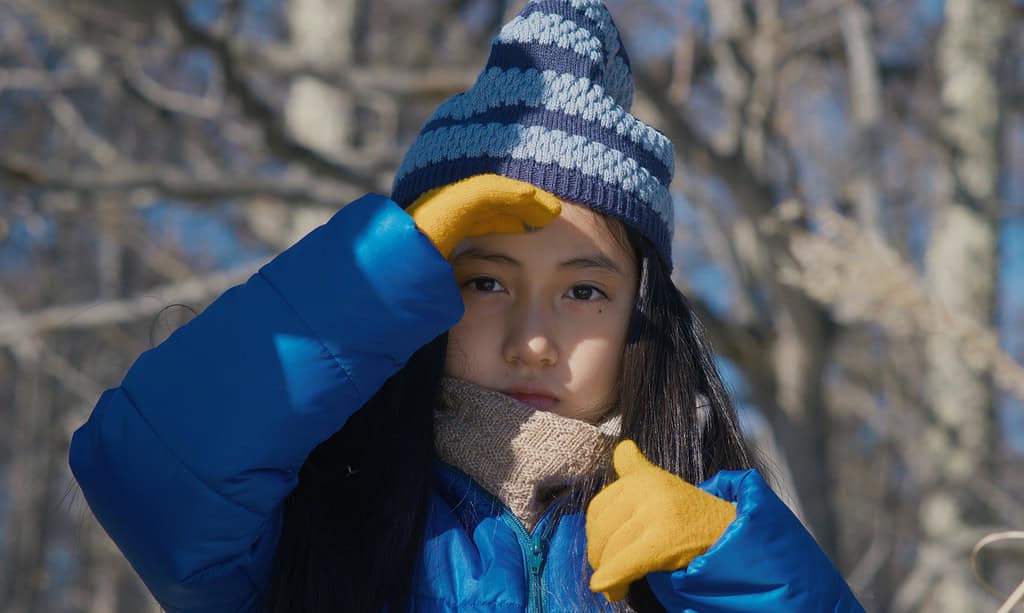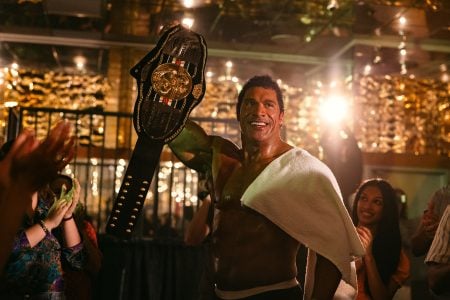Ryusuke Hamaguchi has staggering faith in humanity.
Watching Evil Does Not Exist is a discombobulating experience if you are aware of the present state of the world. Depending on your level of righteous anger, you might find the title of Hamaguchi’s follow-up to the Oscar-nominated Drive My Car to be pretentious, misguided, or something far less charitable. After all, looking around, how can you reasonably posit that “evil does not exist” when it feels like a brand new example every time you open a social media app, watch the news, or walk down the street?
Hamaguchi transports us to Mizubiki, a largely self-sufficient Japanese forest village, to explore this idea. The community’s peaceful equilibrium is threatened by the arrival of two PR representatives, Takahashi (Ryuji Kosaka) and Mayuzumi (Ayaka Shibutani), for a real estate developer. The developer wants to build a “glamping” site on the village grounds and send Takahashi and Mayuzumi for a town hall, hoping to get the community’s support. It goes as well as you might expect, with the villagers poking holes in the plans that the reps can’t address. (Their most common refrain is that they’ll take the concerns under consideration.) Failure isn’t an option, so Takahashi and Mayuzumi try to enlist the help of Takumi, a local tradesman with his young daughter Hana. They embark on a day with him in the village, learning about the community whose destruction they’re aiding.

Evil Does Not Exist thrives in the stillness. For much of the film, Hamaguchi plays a passive observer of the natural world. The film’s extraordinary opening is from Hana’s point of view, looking up at the sky shrouded by trees on her way home from school. When we meet Takumi for the first time, he collects water from the river, the village’s primary source for everything from irrigation to bathing. The camera doesn’t intercede with his daily routine, sometimes capturing from a still distance, other times following him as he carries buckets back to his truck. To write off these moments as monotonous or laborious is to miss Hamaguchi’s celebration of how humans and nature can co-exist. Mutual respect follows through Mizubiki, touching the townspeople, the natural resources, and the intangible peace that Hamaguchi captures. Through his lens, harmony is well within reach.
Harmony is in reach until the greediest people arrive to muck it all up. The town hall is a disaster for Takahashi and Mayuzumi and quietly delicious for us. They arrive with polite arrogance, believing their condescending presentation is enough to win support for the glamping site. As more people raise their hands and challenge everything from irrigation to safety, Takahashi and Mayuzumi are out of their depth. They’re nowhere near cinema’s first snake oil salespeople, but what feels unique is the agency granted to the townsfolk. Hamaguchi doesn’t depict them as gullible victims or angry patrons. Their objections are clearly defined and their delivery is incredulous but measured. Even in their collective rejection of the initial proposal, they offer a path forward, requesting an audience with Takahashi and Mayuzumi’s boss. The community’s strength is on full display, making the representatives look like tragicomic fools.

Takahashi and Mayuzumi know their status, too. Hamaguchi takes a break from Mizubuki to follow the duo back to the city. They relay the village’s concerns, and the developer resoundingly rebuffs them. On their way back to Mizubuki, Takahashi and Mayuzumi lament their stations in life. They especially resent how perception rather than truth defines them. Their hamster-wheel existence is a far cry from the comparative idyll they seek to disrupt. Cynical as their conversation may be, Hamaguchi frames it empathetically, suggesting that perhaps they aren’t lost to the machine. A potent blend of subtly biting humor from the city mindset and weary optimism from the villagers permeates the film. It helps ground the film in something tangible, even as the third act shifts to a more obscure gear.
The ending of Evil Does Not Exist is guaranteed to invite differing interpretations and readings. Hamaguchi offers no clear-cut resolution for his characters’ fates. His hints at a supernatural intervention borne from the tension between the natural and unnatural worlds are also opaque. What feels more substantial than clarity, though, is the conversation’s mere existence. Hamaguchi lays out a compelling, beautifully shot framework for us to consider our relationships with each other and nature. The backbone of the framework is skeptical optimism, where good faith is fortified by challenge and boundaries. If we can operate under that standard model that works so well for the Mizubiki community, how can evil exist?

Well, quite easily. It may be unfair, but I doubt that Hamaguchi’s framework can bear the weight of our heavily fractured world. Even if we regard bad actors as tragicomic fools and prioritize symbiosis, too many factors can override the best intentions. Evil is more resilient than we would like to admit. And yet, Evil Does Not Exist feels closer to a workable solution that might eventually reflect its title. Who knows if the world will still exist by that point? Hamaguchi seems to think so and bless his staggering faith in humanity, even if we don’t deserve it.
Evil Does Not Exist is currently playing at the Film Forum and Lincoln Center in New York courtesy of Sideshow and Janus Films. The film will expand to additional markets in the coming weeks.
[youtube https://www.youtube.com/watch?v=zVY4lWfrbME]
Evil is more resilient than we would like to admit. And yet, Evil Does Not Exist feels closer to a workable solution that might eventually reflect its title. Who knows if the world will still exist by that point? Hamaguchi seems to think so and bless his staggering faith in humanity, even if we don’t deserve it.
-
GVN Rating 9
-
User Ratings (0 Votes)
0
A late-stage millennial lover of most things related to pop culture. Becomes irrationally irritated by Oscar predictions that don’t come true.






